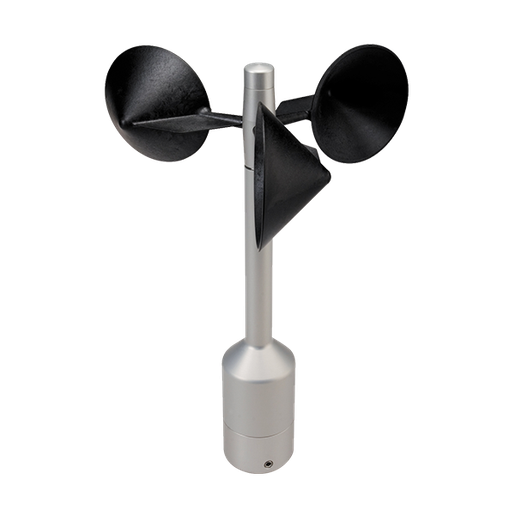Recognizing Different Kinds Of Anemometers for Different Applications
Recognizing Different Kinds Of Anemometers for Different Applications
Blog Article
Anemometers Revealed: Understanding Their Significance in Ecological Surveillance and Precaution
The function of anemometers in environmental surveillance and precaution is frequently taken too lightly, yet their value is indisputable. These tools have a long history rooted in clinical query and technical advancements, progressing to come to be necessary devices in different fields. From meteorology to aeronautics security, anemometers play an essential role in giving accurate information that educates decision-making procedures and boosts total safety and security. Understanding the ins and outs of anemometers unveils a world of vital understandings that are fundamental to our understanding of the atmosphere and the actions we require to make sure safety and security.
History of Anemometers
The advancement of anemometers can be traced back to the ancient human beings where rudimentary wind determining devices were first utilized. These very early wind measurement tools laid the structure for the growth of extra innovative anemometers gradually. Among the earliest known anemometers was the hemispherical mug anemometer invented by Leon Battista Alberti in the 15th century. This style contained 4 hemispherical mugs that accumulated wind energy, providing a dimension of its intensity based on the rate of rotation.
Over the years, developments in modern technology led to the advancement of even more modern anemometers, consisting of ultrasonic anemometers and laser Doppler anemometers, offering increased precision and performance in measuring wind rate and direction. The history of anemometers showcases an impressive journey of innovation and development in the area of meteorology.
Kinds Of Anemometers
Throughout the area of weather forecasting, different sorts of anemometers have actually been developed to precisely gauge wind rate and direction. One of the most common type is the cup anemometer, which includes three or 4 cups placed on horizontal arms that rotate with the wind. As the cups rotate, the rate at which they rotate is directly symmetrical to the wind speed. One more extensively utilized type is the vane anemometer, which includes a tail or fin that aligns itself with the wind instructions. This positioning enables the device to establish the wind instructions. Sonic anemometers use ultrasonic signals to determine wind speed and direction accurately. They are commonly used in research applications because of their high precision. Hot-wire anemometers run based upon the principle that the cooling result of wind on a heated cable is symmetrical to the wind speed. These anemometers are ideal for gauging low wind rates with high accuracy. Each type of anemometer has its staminas and is picked based upon the certain requirements of the monitoring task at hand.
Applications in Meteorology
Having actually reviewed the different sorts of anemometers utilized in weather forecasting for determining wind rate and direction, it is vital to discover their sensible applications in the field. Anemometers play an important role in weather forecasting by offering real-time and exact data on wind conditions (anemometer). Meteorologists utilize anemometers to monitor wind rate and instructions to anticipate weather patterns, concern cautions for severe weather occasions like storms, storms, and tornadoes, and assess weather for air travel security
In meteorology, anemometers aid in understanding regional and regional wind patterns, which are vital for forecasting weather adjustments and determining climatic patterns. These tools are likewise used in research study to examine microclimates, city warm islands, and air contamination dispersion. In addition, anemometers are employed in farming to maximize plant management methods, such as irrigation and pesticide application, based upon wind problems.
Value in Aviation Safety And Security
An integral facet of guaranteeing air travel safety and security lies in the careful surveillance of wind conditions utilizing anemometers. Anemometers play a crucial role in air travel by providing real-time data on wind rate and direction, aiding pilots in making notified decisions during liftoff, landing, and flight. Solid and unforeseeable winds can considerably influence airplane procedures, making it necessary for aeronautics authorities to rely upon exact wind dimensions to guarantee the safety of guests and staff.

In the vibrant setting of aeronautics, where even small adjustments in wind rate and instructions can have profound effects, anemometers stand as indispensable devices for advertising secure and secure flight.
Duty in Environmental Research
Anemometers play a vital duty in environmental research study by providing crucial data on wind speed and instructions. By properly determining wind qualities, anemometers assist researchers evaluate the activity of toxins in the air, evaluate the influence of commercial emissions, and forecast the spread of contaminants in the setting.


Verdict
In final thought, anemometers have actually played an important role in environmental surveillance and security measures. Recognizing the importance of anemometers is vital for properly determining wind speed and instructions, which is important for predicting climate patterns, making certain safe aeronautics procedures, and conducting environmental studies.
One of the earliest well-known anemometers was the hemispherical cup anemometer designed by Leon Battista Alberti in the 15th century. Over the years, advancements in innovation led to the growth of even more modern anemometers, consisting of ultrasonic anemometers and laser Doppler anemometers, using increased accuracy and performance in determining wind speed and direction. Hot-wire anemometers run based on the principle that the cooling result of wind on a warmed cable is symmetrical to the wind rate. Meteorologists make use of anemometers to keep track of wind rate and instructions to anticipate weather patterns, problem warnings for serious weather occasions like cyclones, tornados, and hurricanes, and examine climatic problems for air travel safety and security.
Comprehending the relevance of anemometers is essential for accurately gauging wind rate and direction, which is crucial for predicting weather condition patterns, making certain safe air travel procedures, and conducting environmental studies. (anemometer)
Report this page